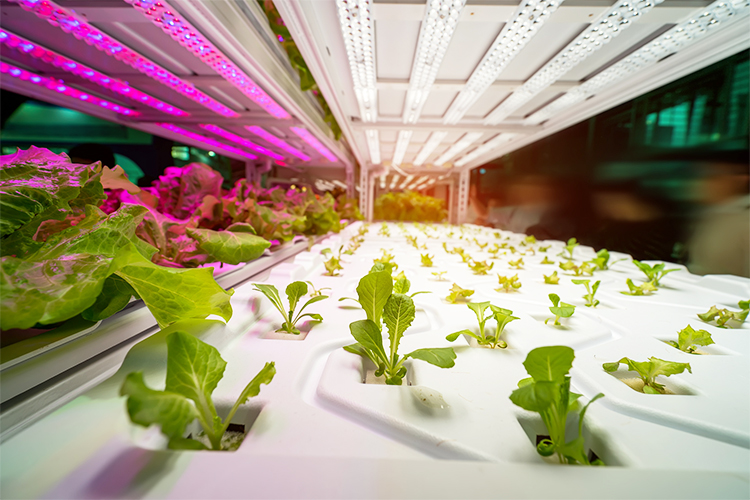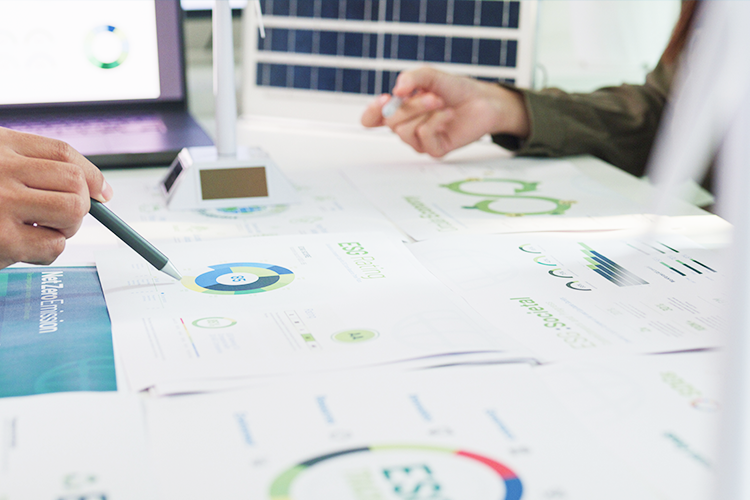HortiCann 2020 Introduces Industry-changing Plant Growth Research and New Efficacy Standards
December 13, 2020
Like most 2020 events, this year's HortiCann Light + Tech Convention shifted to an online format October 20-21 to present the latest in horticulture lighting, control systems research and demonstrations.
Many leaders in the field of indoor horticulture use this annual convention as an opportunity to demonstrate their new research and they did not disappoint in 2020. Here are some of the most impactful new advances featured at the conference:
Far Red Light Supercharges Photosynthesis
Keynote speaker Dr. Bruce Bugbee, director of the University of Utah Crop Physiology Laboratory, immediately set the tone for the convention by presenting research demonstrating the effects of Far Red (FR) and UV-A light on plant growth.
Dr. Bugbee found that FR light, the waveband at the extreme end of the visible light spectrum, affected plant growth, causing increased cell, stem and leaf expansion. This important discovery significantly revises what we know about the impact of light spectrum on plant growth.
For the past decade we've assumed that only the light spectrums that can be absorbed by chlorophyll are significantly important to photosynthesis. These light spectrums lie within the wavelength range of 400 nm – 700 nm, traditionally called the PAR spectrum.
What Dr. Bugbee's research showed is that FR light, between 700 nm – 780 nm, also affects plant growth by supercharging photosynthesis, allowing plants exposed to this light range to grow faster and larger.
UV-A Light Promotes Plant Health
On the other end of the spectrum, Dr. Bugbee presented research that said UV-A light, in the wavelength range of 380nm – 400nm, affects plants by allowing them to become more robust on their outer surfaces.
The UV-A light triggers plants to produce UV blocking compounds that keep them safe from pests and increase certain nutrient levels that wind up in their fruit, flowers and leaves.
Balancing the Benefits
More interestingly, Valoya, a research driven horticultural diode company, demonstrated that two light spectrums, UV-A and FR, seem to counteract each other and could be used in tandem to create a balancing effect.
While more FR creates bigger plants and increased UV-A develops stronger, squatter plants, a desirable, profitable plant lies somewhere in between. Large plants can collapse under their own weight and tend to produce fruit so large that they rot before they can be picked. Plants treated heavily with UV-A produce more photon blocking compounds, which limit the amount of FR and PAR they can absorb for photosynthesis.
It is also interesting to note that Dr. Bugbee said no more than 10 percent UV-A should be used for horticultural lighting solutions. However, Valoya's research found that two spectrums cancel each other out and push beyond the 10 percent boundary. This highlights that further research is warranted, and in areas where Valoya is actively working.
A Path to Higher Efficacy
One of the biggest advantages of the new revelations from this year's research, demonstrated at the convention, is that FR LED diodes tend to have much higher efficacy with regard to energy input in relation to plant growth.
This means that soon, much higher efficacy horticulture lights will enter the market, allowing for very efficient indoor grow lights that leave the old industry standard lights—double ended high pressure sodium and metal halide—in the dust.
This led the Design Light Consortium (DLC) to start outlining a new spectrum range that measures grow light efficacy. Called Photo Biologically Activated Radiation (PBAR), the range will contain light wavelengths from 200 nm – 800 nm.
A Standards Debate
The DLC is in conversation with many horticulture lighting companies about whether or not this range makes sense for horticulture efficacy calculations. The debate continues about whether the DLC should adopt PBAR or continue to use PAR as the standard measure.
Timing for this decision is critical. Many states already have or soon will be implementing legislation that requires newly built or retrofitted Controlled Environment Agriculture businesses to install grow lighting that meets required light efficacy levels and disqualifies many older horticulture lighting technologies.
Controlled Environment Agriculture facilities across the US that are newly built or who would like to retrofit a small percentage of their existing lighting will have to comply with much of this new legislation.
For detailed information about the legislation requirements for lighting in your area visit your state government website. For more information on the progress of redefining horticulture lighting efficacy visit the DLC website.
Mark Thomsen is a Control Systems Engineer at EMC. He holds a Bachelor of Science degree in mechanical engineering and a minor in renewable energy resources from the University of Nevada Reno. Mark attributes his interest in energy efficiency, sustainability and conservation to his great-granduncle, Bud Jordahl, who was one of the cocreators of Earth Day.


